Jamie Jean Schneider DommDigital Strategist, Social Media + Big Data, North American Division IntroductionHumanity has been asking existential questions forever. We’re wired for purpose, constantly seeking to answer the big question, “Why?” Although a record-breaking number of believers are leaving brick-and-mortar churches in America, every month, over 100,000 people go on Google and type into the search bar, “Is God Real?” Countless others search for Bible study tools. Our neighbors are asking Siri, not a pastor, “What happens after death?” or profoundly, “What is faith?” The world is going digital, but should the church? The answer is that the gospel should go to all the world, using whatever tools and gifts we have. The eyes of people are on screens, especially the youth. The church must be equipped to go where people’s attention is focused—to be in the world, but not of it. In this free handbook, we’ll demonstrate how to use social media networks for ministry and evangelize to young adults ages 18−30.
Jamie Jean Schneider DommDigital Strategist, Social Media + Big Data, North American Division Only 20% of Americans regularly attend church, and only 2 in 10 millennials consider regular church attendance important. The Church no longer has the option of embracing change or leaving it to the next generation. The time is now; otherwise, we will become irrelevant. Change is never easy, but anything is possible with the Lord (see Matthew 19:26).
People search online for answers to their problems. They turn to the internet for companionship, understanding, information, anonymity, and more. We must be the voice that answers back, online, to share our message of hope and wholeness. Our digital presence may be the only exposure to the Gospel many people receive. We must recognize that the mission field is online, and just as legitimate as traditional evangelism. We need an army of digital evangelists dedicated to carrying the gospel to the digital mission field. Here are 5 steps you can take to become a digital evangelist with resource links:
Jesus sought first to fulfill people’s needs; He then invited them to follow. We can use social media and digital tools to achieve our mission of spreading the gospel and helping people by creating content that focuses on mental, physical, and spiritual needs first. Once this foundation is established, we can invite our audience to “taste and see that the Lord is good” (Psalm 34:8, NIV). When used for digital discipleship and evangelism, this shift in focus is a way we can follow Jesus’ example for everyday ministry to real people. We can use social influence for kingdom building while utilizing modern tools and technologies. For a practical guide to using digital technologies for outreach, community service, growth and evangelism, purchase the North American Division’s Digital Discipleship & Evangelism Guidebook at SDAdata.blog/book. Available from AdventSource. Print, Kindle and ePub versions available. Jamie Jean Schneider DommDigital Strategist, Social Media + Big Data, North American Division Angeline BrauerDirector, Health Ministries, North American Division How to bring the workspace into the home spaceMany organizations are creating opportunities and policies for working remotely—and not only to promote social distancing during the current COVID-19 pandemic. As early as 2012, nearly 39% of employees spent some portion of their working hours outside the office, according to Gallup. Making the transition to working from home can be challenging on several levels. Here are 10 tips to help bring the workspace into the home space.
BONUS TIP FROM JAMIE DOMMGuard the edges of your day. Start and end the day without social media and laptops. I can easily become consumed by digital tools and technologies; it’s my job at least eight hours a day. If I don’t set healthy boundaries for myself, the negative aspects of digital and social media start to drag me down and prevent me from really resting. Rest can take many forms, but I cannot rest by spending hours on my personal social media (or on my laptop) when I work all day on those same platforms. What many consider a pleasure just feels like more work. When I’m not working, I consume media and information the old-fashioned way by reading magazines and books. Also, in the morning, I make it a point to follow Jesus’ example and begin with solitary prayer and Bible study…with a physical Bible. “Very early in the morning, while it was still dark, Jesus got up, left the house, and went off to a solitary place, where he prayed.” – Mark 1:35 NIV The peace of the morning enables me to think clearly and connect with God. I know that the moment work begins, I will be connected on multiple platforms for at least the next eight hours, so this “analog” devotional time is sacred. When the day is done, I disconnect and again turn to print material, exercise, and face-to-face conversations to help me wind down. Staying connected online throughout the evening can disrupt your sleep and result in depression. If you browse social media to stave off loneliness and pain, you will find the exact opposite of what you’re looking for, especially in these uncertain times. ONE FINAL THOUGHT BY ANGELINE BRAUER If you are feeling lonely and isolated, remember that someone else is probably feeling that way, too. How can you use this opportunity to connect or reconnect with someone? If you pray about it, God may just whisper a name to you. Why not reach out and connect with them? Webinar: Tips for Working from HomeJamie Jean Schneider Domm Digital Strategist, Social Media + Big Data, North American Division He who is careless and heedless in uttering words or in writing words for Long before audio-visual equipment was invented, Ellen White knew how to do the figurative mic drop better than anyone. This quote is a powerful and relevant reminder of the solemn task we have been charged with. I encourage everyone who is on social media, especially digital missionaries, to read her Counsels to Writers and Editors. Social media is the ultimate equalizer. It gives a voice and a platform to anyone willing to engage. – Amy Jo Martin Social media has eased entry into the world of telling stories, sharing ideas, and expressing thoughts to a wide audience. It used to be that if you wanted to tell your story to a broad audience, you had to buy your way in through costly traditional media. Times have changed; we are all writers and publishers now. But with this ability comes responsibility. Social media, in its essence, is people connecting with people to create a collective human story. We all want to be heard, and we all now have a platform for public speaking. You can have hundreds, thousands, even millions of people viewing your messages. But, as so often is the case, the person we need to set boundaries with is ourselves. Your personal social media is a great opportunity to share your story and contribute to the collective conversation. It can serve as a powerful witnessing tool, revealing what God is accomplishing through you and your work. But… Would someone know you are a Christian based on your social media? I once listened to a powerful sermon in which the speaker asked, “If you were pulled into court today, is there enough evidence in your life to convict you of being a Christian?” Well, what evidence does your social media provide? Is your use of social media driving people away from the Church or toward Christ? Think about it. Social media is public by nature and has blurred the lines between your work for the Church and your personal life. This can be a good thing. Follow principles of responsible use and be a living testimony to others. Be a light among the quagmire of negativity online. Let your light shine before men in such a way that they may see your good works, and glorify your Father who is in heaven. – Matthew 5:16 Every opportunity to share is an opportunity to either advance or hinder the kingdom of God. People should use social media; it is a powerful tool. After all, the appeal of social media is that it reflects a basic human need, and that need is to connect and share. As digital disciples, that means connecting with each other and God as well as sharing the gospel. It is likely that you have friends or followers on social media who are not Christians or who are questioning and struggling with their faith. As a member of the Church, you are always representing the Church even if you are not actively engaged in digital evangelism. This is especially true for pastors and others in leaderships roles. It is of vital importance that we maintain a high standard of ethics, striving to always be honest, professional, and kind. This means always verifying questionable content with credible sources before sharing, honoring the privacy of others, respecting intellectual property rights, and never releasing confidential information. However, you may share official statements from Church leadership. Your posts can have a much greater impact and reach than you imagine. We recognize and value diversity of opinion within our community, but as an employee or member, your followers may confuse your opinion with the official position of the Church. While this is most likely not your intention, be mindful to:
How many people are you willing to drive out of the Church to make a point or to “win” your argument? Public figures have the potential to magnify division and take thousands out of the Church. As individuals, we may discourage someone from even considering Christianity. We talk about a life lived as a reflection of Christ but turn into devils on social media. People say things online that they would never dare to say in person, and then wonder why their ministry efforts are not bearing fruit. We were all taught in primary school to T.H.I.N.K. before we speak. It is not enough for something to be True; it must also be Helpful, Inspiring, Necessary, and Kind. This is especially true in online communication. Because of the power social media can have, it’s crucial that we consider the effects our content will have on our audience. Both our negativity and our positivity grow exponentially as they are spread by our audience and friends online. When it comes to church, we can create a community of people that attack or a community of people that heal. – Kaleb Eisele, Humans of Adventism We absolutely respect and value different perspectives among our members and ministry leaders. But as representatives of the Church, we must not use our public speaking platforms as a sounding board for the problems we see in the Church, in leadership, and in our country. We are a family; let’s resolve our internal issues privately. It would be considered obscene to go knocking on doors and to begin your evangelistic effort by lambasting the very Church you are asking people to join. So why do it online? We must protect our Church family and frame all of our digital communications with the salvation of others in mind. Social media is a powerful tool for sharing the gospel; let’s use it wisely and err on the side of caution. The power and efficiency of our work depend largely on the character of the literature [message] that comes from our presses [social media profiles]. Therefore, great care should be exercised in the choice and preparation of the matter that is to go to the world. The greatest caution and discrimination are needed. Our energies should be devoted to the publication of literature [posts] of the purest quality and the most elevating character. Our periodicals [blogs, videos, and updates] must go forth laden with truth that has a vital, spiritual interest for the people. Freedom of speech does not mean freedom from consequences. Carelessness in speech can and will inhibit our ability to accomplish our mission. When we turn people away from the Church, we are not only working against ourselves, we are working against God. You can also get your ministry or self in legal trouble. If you work for the Church, you may endanger your job and reputation. This can be avoided by using discretion and focusing on the positive, such as what God is accomplishing through your church or ministry. Let’s not fall into the trap of using the negative and sensational to get attention online when God calls us to focus on what is good and holy. Finally, brothers, whatever is true, whatever is noble, whatever is right, whatever is lovely, whatever is admirable―if anything is excellent or praiseworthy, think about such things. – Philippians 4:8 We all have the same goal. I truly believe that social media is a vital tool for accomplishing our mission in the 21st century. Young people are leaving the Church at a startling rate. They spend up to 18 hours a day behind a screen, and nine hours of that time is spent on social media. What messages are you sending them? We must take the gospel where they are, and not where we want them to be. But when our actions and our speech contradict each other, we only have ourselves to blame for the rising egression. Let’s work together to get the job done and go home. And this gospel of the kingdom will be preached in all the world as a witness to all the nations, and then the end will come. – Matthew 24:14 Jamie Jean Schneider Domm Digital Strategist, Social Media + Big Data, North American Division The Proper Care and Feeding of Followers Social media is a valuable tool for listening to the needs of your audience and building relationships. However, simply having a social media presence is not enough anymore. Your audience expects a response when they engage with you online—often within a few hours. Your goal in using social media for ministry ultimately should be to understand and fulfill a need, making a tangible impact in the real world. This means listening and taking action on a daily basis. How your online followers perceive your ministry influences their perception of not only the Adventist Church corporately, but God. Your digital voice may be the only opportunity your followers have to see Christ’s love demonstrated in their life. Strong digital brands create connection and take a comprehensive approach to the member experience. Treat your audience members online as if you’re talking with them face-to-face. Their online interactions with you should make them want to experience your faith/mission in person. When they come to you for that personal experience, it should be a continuation of the positive relationship you’ve built with them online. Every opportunity to connect is an opportunity to advance the kingdom of God. Do not waste your digital influence. Social media provides a unique opportunity for long-term people care that can enhance and strengthen the relationships you cultivate with members, as well as the community your ministry serves. People search online for answers to their problems—what better place for the Church to engage them? If someone approached you in person and told you about a struggle or loss, you would respond, right? But when people pour out their hearts online to you or your ministry, are they getting a timely and meaningful response? Does your church or ministry have a team who is dedicated to responding to people online and providing a network of support? Not everyone is ready to walk through the doors of your church, but we can still show them God's love through the care we provide online. Your digital content may answer some of their needs or questions, but not all. Be the voice that answers back and engages with them in a meaningful way. This is what we call a 360° community care strategy. According to the Sprout Social Index, 90% of surveyed people have used social media in some way to communicate with an organization. What’s more, over a third (34.5%) said they preferred social media to traditional channels like phone and email. Like Christ, we should be willing and prepared to meet people where they are, and today, that is frequently online. 360° member/community care includes addressing the negative. By being actively engaged online, you have the opportunity to turn negatives into positives by addressing issues and resolving problems promptly. This is especially relevant to younger generations, who naturally turn to social media first to share their thoughts and feelings. Through a culture of online customer service and digital discipleship, you can build a reputation as an organization that truly cares about its members and the community it serves. Nearly half (46%) of people have used social media to “call out” or complain about a business. That number jumps even higher when you slice the data by generation. Unsurprisingly, millennials are quick to take their frustration to the keyboard—56% of them have complained or called out brands on social media. That means that millennials are 43% more likely to call out a brand on social media than other generations (sproutsocial). Therefore, we should endeavor to be present in the digital spaces where millennials and younger generations are likely to express their dissatisfaction with religion, the Church, or the daily struggles of life. This affords us the opportunity to not only gain a better understanding of the challenges they face but also to intervene in a positive way that can prevent them from leaving the Church or bring them into a community of faith. We underestimate the power we hold in our online content. Used correctly, social media can help us connect with and mobilize an unbelievable number of people, and the community created there drives real-world changes. Do not underestimate the power of engagement. There’s no ROI (return on investment) without it! Invest the time. Build a committee of digital disciples who are available to respond to comments and messages online promptly, while being human. That means engaging with a personal tone that conveys Christ-like care. It will pay dividends for your mission. By living out our mission online and exemplifying the character of Christ, we can become social media ambassadors for the gospel, who eagerly share our content and messages online. Engagement is a Personal Ministry Opportunity. This is not a job for one person or just for pastors. Too often, pastors are burdened with the responsibility of managing the day-to-day functions of their church while also doing all the work evangelizing to the community. When we leave all the ministering duties to the pastor or elders, we limit the opportunities for church members to grow as disciples. Engagement is a personal ministry opportunity for non-techie, nurturing individuals to be involved in digital discipleship and evangelism on an ongoing basis, from anywhere. Leaders can divide their teams into three groups based on connections, interests, and talents.
Digital interactions should be treated like real-life conversations in which we respond to audience interactions, share community-generated content, and “like” or react to comments. Engagers should follow relevant online conversations and actively participate in a Christ-like manner. Digital disciples should seek to understand their audience’s needs and respond in a meaningful way. Building online relationships can impact brand awareness, trust, financial support for ministries, and more. The goal is to break down the perceived barrier between the individual and your corporate brand. Strive to be authentic and as transparent as possible. This is how you build trust and authenticity. Brands are Communicated, Not Just Created A brand is based entirely on a person's experience. Think holistically about your engagement strategy, and remember that evangelism is more effective when it is built on a relationship. Therefore, our online identity or Adventist brand and faith must go beyond what we know and the message we have to share; it must be based on how much we care if we are serious about digital evangelism. We must change the way we use social media. Aim to create conversations and meaningful community that bridges the gap between the digital and the real world. Then be prepared to meet in the real world. Remember, brand touchpoints all work together. There should be no disconnect between how a person is nurtured in the pews and how they are treated online, and vice versa. Social media is an extension of our church brand and voice online. Our brand is how our church is perceived. As stated previously, our online interactions with people should make them want to experience our faith/mission in person. Then, when they come for that onsite experience, it should be a continuation of the positive relationship you've build with them online. Therefore, your church greeters and hospitality teams are also part of the engagers team. They are the onsite church ambassadors, and the atmosphere they create is vital to the visitor/member experience. How our online community perceives us influences their perception of not only the Adventist Church corporately but God. Our digital voice may be the only opportunity they have to see Christ's love demonstrated in their life. The Church should be the clear leader in people care. Major corporations know that customer service is the key to long-term growth. Loyalty comes when organizations (brands) help people solve problems and address their felt needs. Our mission is to maximize the highs; minimize the lows. Loyalty is created when brands help people solve problems and address their felt needs. The Church should be a clear leader in member and visitor experience as well as in people care. Remember that approximately a quarter of people are in crisis at any given moment in North America. We should be using digital tools to understand perceptions and needs to determine the most meaningful ways to serve.
Investing time can make a huge difference in the health of the local church and its ability to effectively build relationships with the community it serves. When we use our social influence to listen and ask simple questions like, “Are you okay?” or “How can I help?”, the intentionality behind our interactions becomes a powerful witnessing tool. Whether from a personal account or a ministry account, engaging in genuine conversations online is a means to live out Christ’s example of meeting people where they are and tending to their needs. We embody the spirit of the good Samaritan every time we respond to a cry for help. A 360° community care strategy is one that is driven by purposely reaching out to whoever we encounter online. I believe that the next great awakening will be a digital one. We have the ability to preach and live out the gospel in view of millions of people, so let’s do it. We need every single one of us to commit to being a digital disciple within our sphere of social influence, using social media and digital tools as vehicles to reach out and care for God’s children. Jamie Jean Schneider DommDigital Strategist, Social Media + Big Data, North American Division Gorgeous2God is an online ministry dedicated to the difficult issues that teenage girls face. The content is relevant, tackling issues and topics that many don’t feel comfortable talking about in church. As of the writing of this guide, the ministry has over 45,000 followers on social media, millions of impressions, and over 200,000 video views. These stats are great, but the real value in something like Gorgeous2God is not the number of likes; it’s in meeting a very real need and filling a spiritual void for our teens, who have challenges today that older generations didn’t have to face. The advent of the digital age has made navigating young adulthood more complicated, and youth are often left to deal with their problems alone. The need for this ministry is great. The #gorgeous2god blog has given teen girls a place to search for answers to the challenging questions they face about love, life, health, and faith. I have met so many young girls who are hurting and looking for someone to listen—girls who are suicidal, becoming dependent on alcohol, or who have just shut down completely. The confidential Q&A part of this ministry serves to create a support system, offering crisis help and community care management. It is the top-visited page on the website, and girls write in from all over on a range of topics, including self-harm, sexuality, loneliness, depression, anxiety, and relationships. When they have nobody they can trust or talk to, Gorgeous2God has given young girls a safe place for Christian guidance on real-life issues. The impact of this ministry is felt through countless testimonials: This [person’s question] resonated with me on a such a deep level. It's as if this question and response was written just for me. Please keep me in prayer, too, as I struggle with the same temptations. What if every church offered a safe place without judgment? Too often, Christians wall themselves into a protective bubble and don’t know how to respond to the difficult realities people face daily. Unfortunately, the feedback that many teens receive feels like it’s coming from a position of moral superiority, leaving them feeling judged and isolated. When we offer a place where people can share without fear of condemnation, where we listen more than we talk, where our advice stems from understanding and compassion rather than moral judgments, they find that the It’s a privilege and a great responsibility when people come to us for answers. It’s not just community members either. Church members are not immune to the struggles and temptations of life. Let’s give people a safe place to land by demonstrating Jesus’ love and compassion for them. The Church should be seen as a place for sinners to find community and help. This is what we should be known for. Pay attention to cries for help As a church body, we need to pay attention to cries for help. Every individual has some social influence and can actively use this influence to improve the well-being of others. In a famous example, the actor Pete Davidson from Saturday Night Live (SNL) posted online: “I really don’t want to be on this Earth anymore.” This alarming post resulted in a spur of online messages, phone calls, and people showing up in person to check on him and provide encouragement. Not everyone is famous with millions of followers to analyze their every comment and post, but they are no less valuable to God. The Church body should be setting the example in this kind of community care. It’s not uncommon for people to post a cry for help online. If we use our sphere of digital influence to stay connected to our friends and community, we can be there when people need us by simply paying attention and taking action. The following are two actual Instagram posts from a friend of mine, who normally shares only her social media best. These tipped me (and others) off that something was very wrong, and we were able to reach out to her in a timely manner to provide the necessary support. Because we had invested time in building a relationship with her in person and online, we recognized this radical departure in posting behavior as a warning sign. When you invest in building relationships, you can better recognize warning signs and know how to respond. When a church member makes a cry for help online, is the Church body paying attention? We should work to extend the church experience beyond the confines of time and space in a building to an involved community that provides 24/7 support not only to members but also to our broader contacts. We are our brothers’ and sisters’ keepers. We must really listen and take time in a busy world. We must also go online with purpose, not just for amusement and to pass time. By being intentional, we can make meaningful and measurable differences in people's lives. To be effective, churches should cultivate and nurture healthy communities, both analog and digital, both within the church and in the community, thereby better positioning ourselves to provide a ministry of healing and broad networks of support. Recommended action steps:
How does community building work in the digital space? Community building in the digital space works in much the same way as in the physical world. Expert evangelists tell me that the most effective form of evangelism is friendship evangelism. Digital tools simply allow us to scale up friendship evangelism, but this takes getting out of our comfort zone and being intentional about interacting with people, paying attention, and following up in meaningful ways. This kind of outreach can involve every member of the Church, using the communication tools each individual feels the most comfortable with. Scale up friendship evangelism by:
Give them Community, Love, and Support It all starts by connecting with the people you meet inside and outside the Church, understanding that not all online relationships have to remain in the digital space. The closer we get to people, the more involved we can be in their lives, and the more influence we can have. Our goal should be to take them from the digital experience to an in-person experience whenever possible. When we seek daily to serve and uplift others, our faith can have a real-world impact that is relevant to all ages.
According to The Knot, 19% of brides met their spouse online in 2017, making online dating an increasingly popular way to meet prospective partners. It's natural for us to first connect with people in the digital space before developing more meaningful relationships. The Church shouldn't shy away from this change in culture. Digital discipleship is an opportunity for those gifted in fellowship to build relationships and trust within the local community and beyond. Jamie Jean Schneider DommDigital Strategist, Social Media + Big Data, North American Division Engagers are at the front lines of mission and can serve as a powerful mechanism for community care. These empathetic individuals can operate within an organization or independently to engage in online conversations for the purpose of building meaningful relationships, understanding needs, and determining meaningful ways to serve others in both local and online communities. Every opportunity to connect is an opportunity to advance the kingdom of God. Let’s not waste our digital influence. Social media and digital tools provide a unique opportunity for continuous people care that can enhance and strengthen the relationships you cultivate with church members as well as with the community your ministry serves. Why do we need engagers? When we consider the roots of the ten leading causes of death (diagram below), we can see eight opportunities for the Church body to improve the well-being of others. These eight root causes—stress, a sense of meaningless existence, lack of information/education, anger and frustration, loneliness and social isolation, low self-esteem or self-worth, economic disparity, and helplessness and emotional despair—can be addressed through the corporate Church’s messages of hope and wholeness as well as the local church’s ability to directly meet the physical and emotional needs of people. The Curious Case of Roseto, PAA real-life example of the potential impact of addressing these root causes can be found in the book Outliers by Malcolm Gladwell. He begins the book with the story of an Italian immigrant town in Pennsylvania, whose population was made up entirely of Italians from Roseto, Italy. Due to prejudice, it was common for Italian communities during the early to mid-1900s to develop separately from the general population. The people of Roseto, PA smoked heavily, 41% of their calories came from fat, and many struggled with obesity. Yet they were able to avoid the main causes of death. An extensive study was done of this community, and the secret wasn’t diet, exercise, genes, or location. In fact, extended family living elsewhere in the United States did not enjoy the same low rates of disease. There was no suicide, no alcoholism, no drug addiction, and very little crime. They didn't have anyone on welfare. Then we looked at peptic ulcers. They didn't have any of those either. These people were dying of old age. That's it. My mother’s family is Sicilian, and I can personally attest to how extraordinary the health of this community was in comparison to that of other Italian-Americans. Italians in the United States tend to eat more meat, more dairy, fewer fresh vegetables, and less fruit than other Americans, and they favor white bread over whole grains; they also tend to suffer from chronic or severe heart issues. This is in sharp contrast to Italians living in Italy, whose health benefits greatly from a more plant-based, Mediterranean diet. However, growing up, we were taught to believe that Italians “just have bad hearts” and that we were genetically predisposed to have strokes and heart attacks. Recently, a man I had grown up with passed away suddenly at age 36. He appeared healthy, but his heart stopped while he was sleeping. Shock rippled through the Italian community followed by knowing nods of acceptance that it’s really not that uncommon among us. So, what is the difference between the Roseto community and the community I grew up in? When the researchers looked beyond the individual and started looking at health in terms of the community, they found something fascinating. Extended family clans formed the foundation of the town’s social structure. Three generations lived under one roof, people stopped on the street and talked, neighbors took care of neighbors, grandparents were respected, and the people of Roseto were unified through church and civic engagement. ...The Rosetans had created a powerful, protective social structure capable of insulating them from the pressures of the modern world. The Rosetans were healthy because of where they were from (paesani culture), because of the world they had created for themselves... —Malcolm Gladwell, Outliers In other words, they avoided illness because they had transported their communal, village way of living—embodied by the paesani culture of Italy—to their new home, whereas the Italian community of my childhood has become disconnected, individualized, and distant, only gathering together at the American Italian Society for major holidays. ...the values of the world we inhabit and the people we surround ourselves with have a profound effect on who we are. —Malcolm Gladwell To live out our faith and mission in the modern world, we have to be counter-cultural by striving to build healthy communities and support systems. While family and community structures have broken down, the Church, with some effort, can rebuild some of what has been lost to meet the physical, emotional, and spiritual needs of people. While the world has changed, people, fundamentally, have not. We still need each other. Digital tools and technologies offer a way to build meaningful relationships in a busy modern world. This takes empathetic and intentional people who can use their digital influence to uplift and connect with others.
Jamie Jean Schneider DommDigital Strategist for the North American Division In terms of who makes up the digital discipleship and evangelism team, our philosophy includes everyone. The integrated model utilizes every active member in a holistic approach that aims to scale up the traditional friend/community evangelism and discipleship models, not replace them. What does this mean practically? It’s not a digital approach attempting to subvert a traditional approach, but, rather, the entire church body using all its human resources, diversity of spiritual gifts, and available tools to work together for a common goal. Church growth is a product of promotion, experience, and personal connections. Digital technology is a powerful tool to guide more people into your church, but the on-site experience and personal connections is what will keep them coming. After all, it’s one challenge to attract new people; it’s another to get them to keep returning. To encourage people to remain in your community, whether online or in person, they must not only have a good experience, but also connect with the members on a personal level and become integrated as a participating member of the community. If we understand the local church to be a community of believers, we must seek to create meaningful connections, reaching out to seekers whose experience often starts online, as well as to those already in our house of worship. Your church’s online interactions with potential visitors should make them want to experience your faith and mission in person. Then, when they do come for that on-site experience, it should be a continuation of the positive relationship you’ve built with them online. The same is true in reverse. To achieve a continuity of experience and relationship building, everyone is part of the process. This means the 84-year-old greeter at the door is part of your digital discipleship and evangelism team just as much as the tech savvy youths who create video snippets and content for your social media. It includes the passionate and knowledgeable worship leaders who answer questions and host online bible studies. Remember, what starts in the digital space is not confined to the digital space. It may take weeks, months, or years, but eventually those people who have been touched by your digital voice may be moved by the Holy Spirit to walk in the door. From their perspective, it’s all one spiritual journey and experience, not digital versus traditional. They don’t view their experience in silos; therefore, we must break down the silos of how we go about discipleship and evangelism. Every touchpoint matters and must tell a consistent story!Look at this process of evangelism holistically. Consider all possible touchpoints in the list below and ask, “Where does the experience decelerate? Where is the breakdown in communication?” Touchpoints by role groupings include but are not limited to: Creatives/Creators:
With the digital discipleship and evangelism model shown above as a foundational concept, we can understand how the roles of creators, distributors, and engagers can fit into the overall seeker/visitor experience. There may be an overlapping of functions that can occur at multiple touchpoints. Every church is different and has different human resources, and spiritual gifts to draw from. This concept is scalable and adaptable to your situation. Make room for digital discipleship and evangelism. Change can be difficult, especially for institutions grounded in tradition. However, the Adventist Church is also rooted in a movement that was led by young people. We must again empower talented youths in our churches to take the lead in areas where they naturally excel, such as digital communications and community building. In addition, we have not done a good job of recognizing and utilizing the spiritual gifts of tech savvy and creative members. These gifted individuals have a wealth of talent to offer mission work and should be encouraged to use their skills in service. We can change the culture in our faith communities to make them feel that the Church truly values their time and talents just as much as Bible workers, nurses, Bible study leaders, and speakers. Form teams of content creators, distributors, and engagers. Each church likely has various members who could specialize or lead in certain areas. These can be powerful personal ministry opportunities, especially for empathetic persons who can facilitate positive conversations online and share stories of faith. Seek to create a culture of sharing and engaging with church social media content as a means for individuals to help fulfill the church’s mission and expand the reach of messages. Anyone who is on social media, has an email address, or is connected to the internet can share content. It doesn’t matter if a person has four friends or 40,000, they have influence. Find ways to leverage social influence. If people are connected to others through digital technologies, they have digital influence. Each impression/message received represents a person touched by your message and mission. “Social butterflies” can learn to use their online and offline influence to engage in practical mission work. There is a place for all skill levels. Influencer groups in your church may include, but are not limited to:
Organize multi-generational training and mentorship opportunities. This will only strengthen your church body and improve cross-generational relationships. Young people yearn for mentorship, and the older generations can learn a lot form the natural skills of the youth. The church should be the ideal example of two-way mentorship in action. Ultimately technologies change, but people and their needs largely remain the same. Healthy communities involve multiple generations coexisting in a collaborative and supportive manner. In summary, to make room for digital discipleship and evangelism in your church:
Utilize Digital Bible Workers. If you are lucky enough to have a Bible worker, empower them to expand their efforts digitally. Social media and other digital technologies can be leveraged as lead generating tools. Remember, young people spend upwards of 9-18 hours a day behind a screen, and that affords the church a lot of opportunities to reach them with relevant content and conversations facilitated for seekers. Ideally this is someone who can ultimately lead a focused evangelistic effort, train others, build a dedicated team, and work with other groups and initiatives within your church. Digital technologies allow a Bible worker to enter a person's life at the convenience and comfort level of the recipient by providing relevant online content, a degree of anonymity, a simple platform for question and answers, and opportunities to engage and form relationships. What does a Digital Bible Worker Do?Digital Bible workers utilize digital technologies to share the gospel and stimulate religious thought by creating and packaging content that addresses relevant needs/questions and encourages people to advance in their spiritual journey. Digital Bible workers build relationships with those in the broader community, online and offline, and usually within a specific geographic territory in order to create opportunities for one-on-one or small group Bibles studies held in person or via digital tools. They work in partnership with a local church and pastor to evaluate the needs of a community and determine relevant opportunities for outreach and service. They mentor converts in their development of Christian character and commitment to faith as well as train and equip new members for active discipleship roles. This role encompasses a mix of digital discipleship and evangelism to bridge the gap between working in the digital mission field and achieving real-world impact.
The following is sample of what a job description could look like for local churches and conferences looking to hire a Bible worker to lead online evangelistic campaigns. This position can also be adapted to more appropriately reflect the role of a digital pastor. Feel free to adapt to your specific needs and HR requirements. View this template as a type of menu to guide you in the creation of a position that makes sense for your organization’s structure. These positions can be adapted for paid or volunteer workers based on the level of time commitment needed and budget available. Position Summary: The Digital Bible Worker will implement a comprehensive, multi-channel digital evangelism strategy designed to meet the spiritual and social needs of teen, 18– to 35-year-old, collegiate, career-focused, single or married seekers (may include other target audiences based on the goals of the conference or church) in the local community. While engagement and relationship building will start in the digital space, the intent is to bring the target audience to an in-person experience. A secondary goal of this position is to mentor young people already in the church towards a deeper relationship with Jesus and greater community involvement—empowering them to also be effective digital disciples. Objectives and Responsibilities: Essential Job Functions:
Traditional Ministry
Leadership
Education and Experience:
Jamie Jean Schneider DommDigital Strategist for the North American Division What has been will be again, what has been done will be done again; there is nothing new under the sun. Is there anything of which one can say, ‘Look! This is something new’? It was here already, long ago; it was here before our time. No one remembers the former generations, and even those yet to come will not be remembered by those who follow them. —Ecclesiastes 1:9-11 NIV To gain insight into the drivers behind the collective shifts in society, read Pendulum: How Past Generations Shape Our Present and Predict Our Future, by Roy H. Williams and Michael R. Drew. These shifts impact communication and often drive technology and social change. I recommend that, as part of your efforts to understand how to communicate more effectively to your target audiences and fulfill their needs, you not only read and study this book, but also invest the time in reading Generations: The History of America’s Future, 1584 to 2069 by William Strauss and Neil Howe. Good communication requires speaking in a way our audience can appreciate. As a religious organization, we should be using digital technologies to fulfill our audiences’ needs, but to do that, we must first understand what those needs are (as discussed in the previous section), their unspoken expectations, and the forces for change that influence a generation. This section takes the 30,000-foot-view of broader trends that may also be acting upon your target audiences. Generation Z and the Millennials have been leaving the Church at alarming rates; could it be that we simply don’t understand them? We know that people of any given cultural group are always the best suited to reach out and evangelize to their peers. I contend that the same is true with generations. Now, empowering and training members of the youth to reach their own does not permit us to abdicate our function as guides and mentors. We too must seek to understand and cultivate these relationships if we are to bridge the gap and secure the future of the Church in North America and promote the salvation of souls. Pendulum provides an analysis of the current shifts in society and their impact on marketing, technology, and communication. The Social Media + Big Data department of the North American Division has repeatedly used these techniques across a broad range of messaging campaigns, consistently yielding successful results. Even if you don’t have time to read the 200-page book, what follows is a summary of what you need to know to understand and utilize these communication techniques. Pendulum takes Strauss and Howe’s four “generations” (Idealist, Reactive, Civic, Adaptive) and reduces it to two generations covering forty years that oscillate between the “Me” philosophy of individuality, freedom, uniqueness, and potential (peaked in 1983) to the collective “We,” working together for the common good, fixing society’s greatest problems, and adopting a philosophy of authenticity and transparency. Sound familiar? According to this model, we are currently in the upswing of the “We” that should reach its zenith in 2023. Both ideals are always present in society but shifts in dominance occur. Optimal balance is found between the two extremes, and either extreme has negative consequences. The main point is that group behavior is predictable, and we can use this predictability to speak to the masses in a relevant way. There will always be exceptions, and as the authors point out:
For deeper insight into the pros and cons of each swing of the “pendulum,” read the book. To communicate, we must ask, “What is driving the actions and attitudes of the group?”Determine how your mission, programs, product and/or message fits or can be positioned into this paradigm. You may need to reevaluate what your ministry offers to better align with what is relevant to your target audience. See the previous section on understanding your target audience. Figure: 2.3 Values and beliefs that motivate society in “WE” and “ME” cycles (Williams 17) Drivers of a “WE” vs. drivers of a “ME” This shift can be seen in successful advertising campaigns that target a worldview/attitude instead of an age group. In other words, instead of targeting people based on surface level demographics, they are speaking to a shared value that transcends age and race as discussed in the previous section. In Pendulum, the authors point out a well-known example. “Remember L’Oréal’s famous ‘Me’ slogan, ‘Because I’m worth it?’ As society passed the tipping point of 2003 and the ‘Me’ became fully unwound, the old slogan was replaced with, ‘Because you’re worth it’” (Williams 172). During this same period, the successful Army slogan “Be All You Can Be” (1980-2001) changed to “Army of One” (2001-2006) but didn’t perform well because it was “contrary to the idea of teamwork” said Frank Luntz, American political consultant, pollster, and public opinion guru (Ball). The current, more “WE” focused, slogan is “Army Strong.” Figure 16.3 Mindset and values in society during a “WE” cycle (Williams 168) Social media is a powerful tool for member care and service. Never before has “truth in advertising” been so important. The younger generations are the most connected, more than any before them, and they naturally turn to social media to voice their displeasure with a brand or experience. “Your advertising [messaging] may fool one of us. But that one will tell the rest of us,” says Roy H. Williams (172). Figure 16.5 Tips to create a serious Internet presence during a “WE” cycle (Williams 172) Self-effacing transparency is utterly disarming. “We want the truth, even if it’s ugly. Shrink-wrapped, sugar-coated, phony posing [of the 80’s through mid-90’s] is no longer acceptable” (Williams 163). Humility, straight talk, and a genuine point of view is what the Adventist Church and its ministries need to embrace; we see the effectiveness of this strategy in the success of initiatives like Gorgeous2God. Gorgeous2God is a community of young Christian women tackling real issues from a godly perspective. True stories from the experiences of real girls are shared and communicated in a candid way that the Church has not embraced previously. Topics include rape, self-harm, sex before marriage, depression, abuse, and other “uncomfortable” topics. Recognizing the underlying cultural principles in a “WE” generation provides guidance and strengthens our abilities to reach our target audience with relevant content, increasing meaningful impact. As a result of continued audience-focused messaging and content development, Gorgeous2God has grown to over 45K followers on social media, with over 20K visitors to the website a year, countless interactions and hundreds of direct messages (as of July 2019).
Analyze your audience; consider the factors discussed in this section and the previous section to then shape your communications in a way that aligns with the drivers behind the current (broad) shifts in society. Position your ministry for success. You will always have outliers within your target audience, but utilizing this knowledge allows your ministry to fish more effectively and increases the potential for a larger catch. Sources: Ball, Molly (January 6, 2014) “The Agony of Frank Luntz.” The Atlantic. Williams, R.H., & Drew, M. R. (2012). Pendulum: how past generations shape our present and predict our future. New York: Vanguard Press. Jamie Jean Schneider DommDigital Strategist for the North American Division Good communication is when you communicate in a way your audience understands. You may feel like you know how to use social media platforms for personal sharing, but writing to achieve a marketing/evangelism goal requires much more thought and strategic planning. This section is designed to give you a framework for successfully defining your target audience and determining how to speak to them in a way that is relevant, encouraging meaningful engagements. It is essential that we not only communicate clearly, but that we also take the time to deeply understand our audience. It doesn’t matter if you know what you mean. Put yourself in your audience’s shoes and speak to them accordingly. Speak to your audience in a way and with the words that enable them to understand and connect with your message. REMEMBER, EMPATHY FIRST. This means that when we communicate in the digital space, we must speak the language of the platform and recognize the “cultural expectations” and “norms” prevalent in the space, as well as within the culture(s) of the people we are communicating to. Without careful research, our words and intentions can easily be taken the wrong way, inadvertently offending and pushing away the very people we are trying to reach. As Christians, we want to reach and include everyone. This is our ultimate goal as disciples. However, from a specific ministry standpoint, this approach ends up reducing the relevancy of the message and spreads efforts too thin for significant impact. Afterall, a standard marketing rule of thumb states: If you try to reach everyone all the time, you’ll end up Each person, ministry, and local church is uniquely equipped and positioned to reach different types of people. Therefore, it is vital to understand who your audience is before you create content, write a single social media post, or spend any money on social advertisements. This section will help you learn how to effectively shape your messages and content to match your audience’s needs and reach them effectively, no matter their age, gender, ethnicity, location, or situation. Determine Your Target Audience The first step in reaching your audience is to develop a clear picture of who you are talking to. Begin with surface-level demographic information. Use the criteria below and fill in the information for your ministry’s target audience. Surface-Level Demographic Information:
Once you’ve determined the surface-level characteristics of your target audience, work down to a deeper level which will help shape your messaging and the kind of content you’ll create. Create deep connections by identifying with People no longer fit into neat categories, so we must connect with them on a more profound level, transcending the standard marketing demographics of age, ethnicity, gender, language, location, and interests. If you can dig deeper, your audience will be loyal to your brand because you resonate with them at their core. The best way to do that is to investigate their needs, experiences, values, and perceptions. Conducting surveys and interviews is one key way to collect more information. Then start asking yourself questions that will help you to get inside the minds of your audience members. What motivates their actions? What makes them who they are? What do they have in common? How can I speak and write in a way that my audience will find relatable? What do they value? What do they actually need? Examples of needs may include: a spiritually supportive community, affordable education, employment, affordable medical care, safe spaces for their children, mentorship opportunities, a better future, healthier relationships, self-improvement, Christian guidance on real-life issues, food security, or practical life-skills training. Use the criteria below and write down possible answers for your target audience. Deep Level Characteristics:
”Cultural Empathy” in the Digital Mission FieldAs discussed in the previous section, the concept of “cultural empathy” is well known in the physical mission field and its principles should be applied to the digital mission field. We live in a world of intersecting cultures or communities, and, therefore, our definition of culture must expand. Many now find themselves between cultures and functioning in multiple communities simultaneously. In order to identify the unifying threads between seemingly dissimilar people, we need to first unpack their many cultural influences. These cultures are potentially endless in variety, but can include:
Now take the time to consider the potential overlap in cultures found within your church, community, ministry, or target audience. How might they influence behavior and needs? What unifying factors can you identify? Internal v. External Are you speaking to Adventists or non-Adventists? Your language may change based on the answer to this question. We must modify the way we communicate in order to effectively reach different audiences without creating barriers. For example, when we are talking to our friends we use certain vernacular that tends to be more playful and friendlier, but when we are talking to our boss or elders, our persona is more serious and professional. The same is true with evangelism and discipleship. We may commonly use certain words such as “Sabbath” or “haystacks” that could seem foreign or confusing to non-Adventists. The list below offers some guidelines on how to distinguish between internal and external audiences. Internal:
Audience Personas 101 When communicating to your audiences, visualize actual people—their interests, culture, wants, needs, and expectations—to refine your voice. You will probably need to create unique personas to represent different target groups within your audience. According to The Guardian, personas can be simply defined as: A fictional character that communicates the primary characteristics of a group or segment of your audience and takes into consideration needs, demographics, motivations, and environments. Determining your audience personas can help you develop and write content that will be relevant and useful to your audience. The best personas are often created by simply talking to your audience, but social media insights, website analytics, and surveys can also prove very useful. Personas give a human face to a collection of information, and they allow you to classify groups for different messaging campaigns and programs. The best personas combine both quantitative and qualitative information. Below is an example of a persona:  About Bryce: Adventist College Persona Age: 17 Education: High school senior Interests: Business, sports, camping, meeting other young people, discipleship training Salary: $3,000 a year Location: Berkeley, Calif. Family: Adopted, married parents, no siblings, Hispanic Goals: Finding a good paying and meaningful job, mentoring younger peers, finding a girlfriend, finding a Christian friend group Challenges: Finding friends with similar morals, avoiding drugs/alcohol, food insecure, feels rejected by his biological parents and struggles to connect, struggles with religious doubt Values: Fair justice system, the environment, good reputation, strong character, fairness, good citizenship, technology and flexibility, diversity, leadership training and experience Fears: The unknown, poor work-life balance, affording college, student loan debt, getting a good job, rejection, finding purpose/meaning Preferred platforms for Media: Snapchat, Instagram, YouTube Messages applicable to Bryce: We are all adopted into God’s family. Our church/school/ministry is a place to belong and a place to grow. Connection to others, connection to God. Diversity and purpose. Mentorship opportunities and support for leadership training or education. Social media personas are developed based on your target audience as defined earlier in this section. The key is finding out what those people want and need; the rest is simply compiling those qualities into a made-up person. As a Church, we need to constantly find ways to reach our audience for the kingdom in the best, most efficient way possible. Creating social media personas is a valuable exercise that enables us, as communicators, to step into others’ shoes and view life from their perspective. Personas help us develop empathy with our audience. Use the following framework to develop your own personas:
Special Note about Generation ZThe Church and the wider Christian community has become increasingly concerned with reaching Generation Z, people born approximately 1997-2012 (Pew Research Center). However, the Church has not yet adapted to meet the needs of the generation before them, Millennials. We should be concerned, as these two age groups represent the largest divergence from traditional Christian values and lowest participation in faith institutions we’ve seen. To reach and retain these generations, we must reframe our approach based on their perspectives. Generation Z lives in a totally different world and interacts in a totally different way than any generation before them. When asked what the most important historical event in the USA in the last 20 years was, they responded, “The release of the iPhone.” Most older people would say the terrorist attacks of 9/11. (Adam Fenner, Director, Adventist Learning Community) From Gen Z and Millenial perspectives, their answer makes sense given that technology and digital communications have completely reshaped society, how we connect with each other, how we shop, and how we live. They have grown up in an almost entirely digital world, and they relate to technology in a more integrated fashion than any other generation before them. So who is Gen Z? What you should consider when targeting this age group:
What do Gen Z’s values mean for the Church? It means we must innovate for meaningful impact. If we don’t, we only have ourselves to blame for the continuous departures. Change is hard, and the Church is notoriously slow to adapt. Now is the time to act if we really are concerned for the salvation of the next generations. Institutions are not permanent. After all, in the words of W. Edwards Deming, “It is not necessary to change. Survival is not mandatory.” The good news is that God never fails. He will always have a people, and He has called us to participate in His great work. In Summary: We must put our assumptions and judgements in the trash. Too often we create programs and content based on our own interests and passions or based on what we think people need, according to our own perspective and bias. Use the audience factors discussed in this section to make data-informed decisions about your audience, then create programs, messaging, and content based on what you discover. We’ll go into content creation in further detail later in the “Content Creators/Creatives” section of this guide. If you’re still not sure where to start, spend more time with your target audience and ask more questions. Find out directly from them what they need, what they feel will improve their lives, and what will inspire them to develop a closer relationship with God.
To reach people, we must become a student of their culture. No judgement, only acceptance and adaptation. No one should know more about your audience than you do. Strive to become an expert on the people you are trying to reach. |
Archives
August 2020
Categories
All
|
- Home
- BLOG
-
RESOURCES
-
RESOURCE MENU
>
- ADVENTIST IDENTITY GUIDELINES
- BIG DATA RESOURCES
- BRANDING, IMAGE & DESIGN RESOURCES
- CHURCH/MINISTRY SPECIFIC RESOURCES
- COPYRIGHT & TRADEMARK BASICS
- COURSES
- EMAIL RESOURCES
- GUIDANCE FOR HIRING SOCIAL MEDIA POSITIONS
- PODCASTS
- REPORTS & CASE STUDIES
- SOCIAL MEDIA RESOURCES
- (SOCIAL) VIDEO RESOURCES >
- TEXTING 4 CHURCHES
- TRACKING & ANALTYICS
- WATCH VIDEOS & TUTORIALS
- WEBSITE TIPS
- SOCIAL MEDIA GUIDELINES
-
RESOURCE MENU
>
- SEO
- Digital Discipleship & Evangelism
- COVID-19 RESOURCES
- eNEWSLETTER

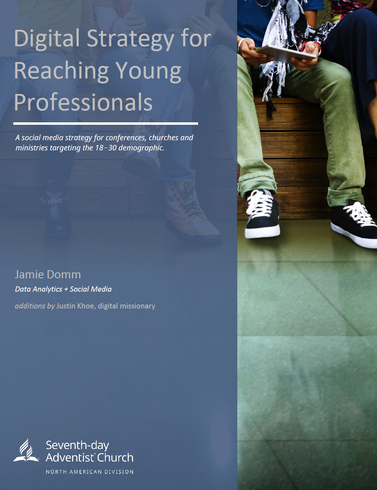







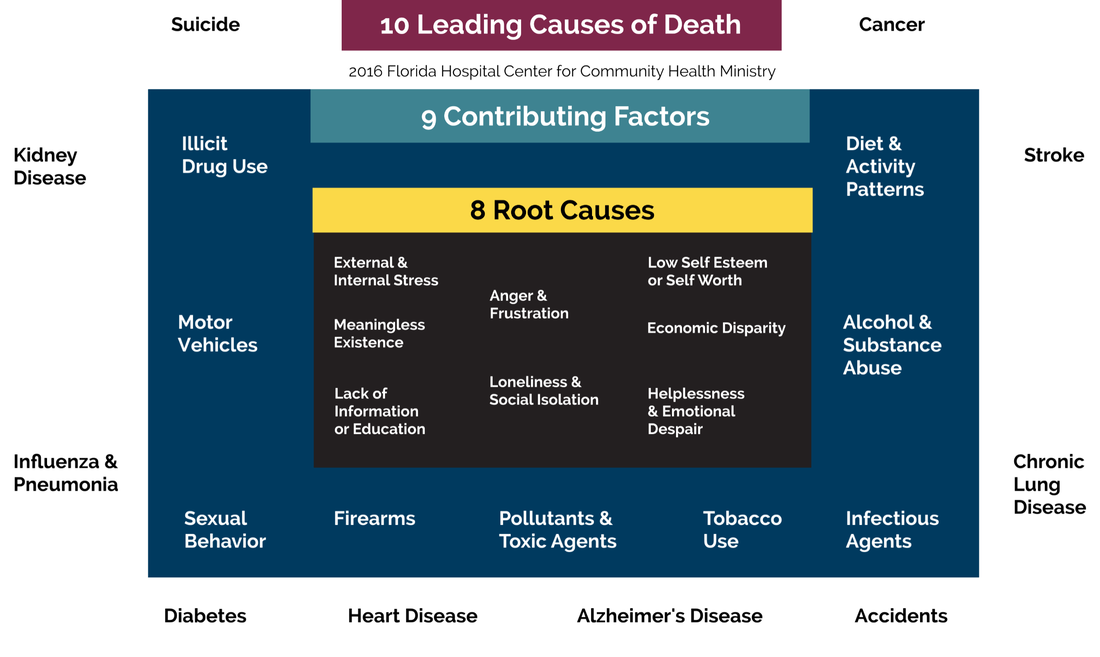

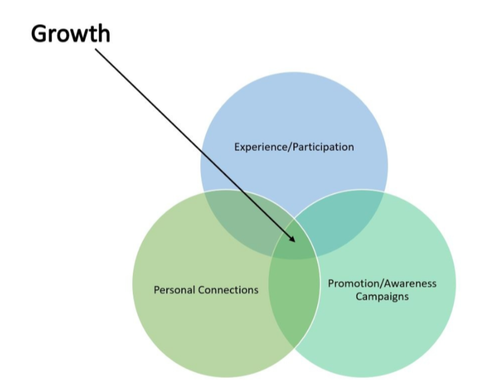
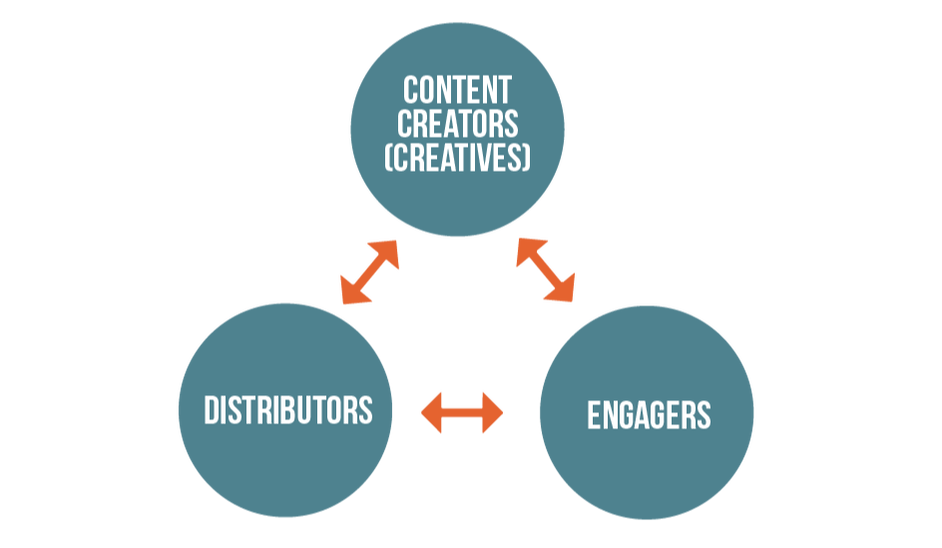

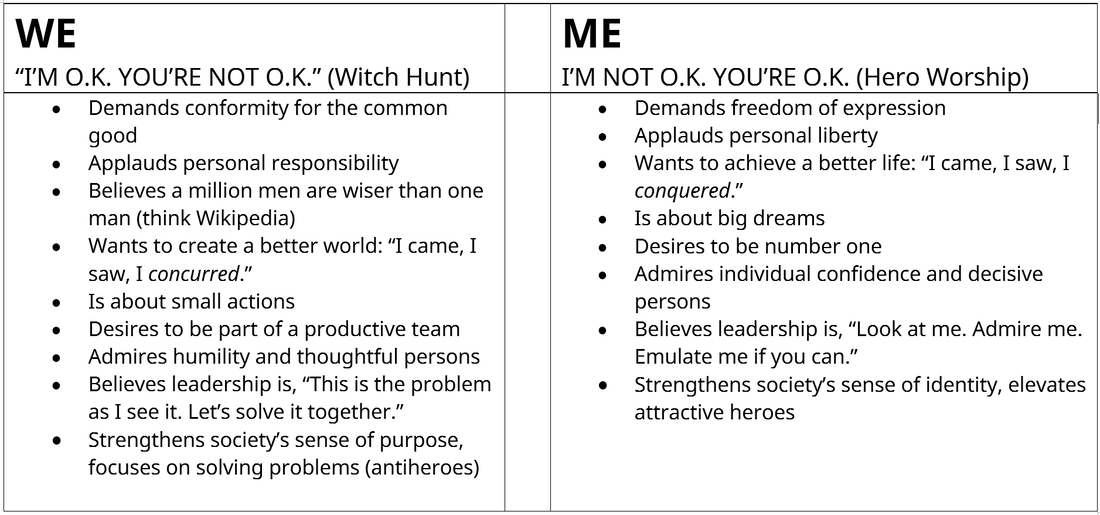



 RSS Feed
RSS Feed